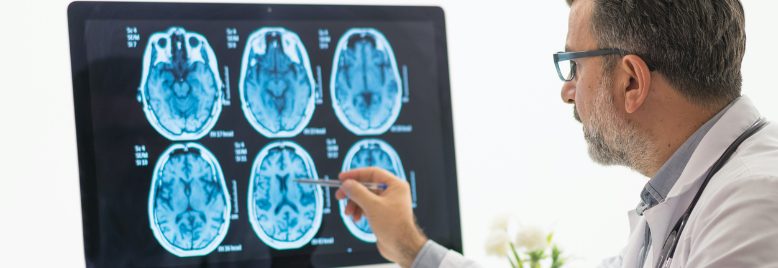- Home
- For families
- Transitional living
- Outpatient treatment
- About us
- Resources
- Addiction in North Carolina
- Addiction in teens
- Addiction guides
- Dual diagnosis
- IOP for professionals
- Life in recovery
- Executive functioning skills for recovery
- Learning humility in recovery | 12 steps
- Addiction stigma after treatment
- Ways to prevent relapse in addiction
- Life skills for addiction recovery
- Treating the whole person in recovery
- How mentorship helps in recovery
- Learning accountability in rehab
- Finding a job after rehab
- Therapies
- Toxic masculinity
- Veteran collegiate recovery programs
- What we treat
- Contact us

heroin in the United States
Including its effects on the tech industry
and higher education
What is Heroin?
When it comes to notoriously lethal and highly addictive drugs, heroin is one of a small handful that comes to mind. Made from the opium poppy plant, heroin’s place in human history is both a hopeful and tragic one. Heroin was created to find a non-addictive alternative to opium and morphine — and heroin was once hailed as that wonder drug. It soon proved to be one of the most dangerous and addictive drugs known. Today, heroin is outlawed in the United States and is responsible for over 10,000 drug overdoses a year.
Heroin’s Status in the United States
Today, heroin’s classification under the Controlled Substances Act is Schedule 1. Within the U.S., Schedule 1 substances do not have a legitimate medical use and have a high potential for abuse.
Sold illegally, these are some of its street names:
- Poppy
- Dope
- Big H
- Junk
- China White
How is it Made?
The opium poppy plant, the source of many pain-killing and addictive drugs, lives in dry, hot climates. Its flower comes in various vibrant colors, including the classic poppy plant, with vivid red petals and a black center. Before they flower, these blooms are pods. The milky-white substance within them makes heroin and other opium-derived drugs.
The white substance from the pods turns brown when removed from the plant. With some filtering, boiling, refining, and chemical reactions, you get heroin.

Heroin in the Tech Industry
In 2013, a Google executive named Forest Hayes died of a heroin overdose while on his yacht in Santa Cruz. The death sent shockwaves through the tech industry and shined a light on its hidden drug culture. According to Dr. Jennifer Fernandez, “it’s the work culture that’s the risk factor for addiction.”1 A therapist named Cali Estes, sees heroin and prescription opioids used more than stimulants like cocaine or meth. Stimulants can be distracting, but heroin allows the tech worker to function even if it’s at a lower productivity level.2 One SAMHSA study estimated that tech workers abused illicit drugs, including heroin, at a rate of around 10%. The same report showed around 9% of tech workers develop a substance use disorder.3
10% of Tech Workers Abused Heroin
9% of Tech Workers Developed a Substance Use Disorder
Tech’s Role in Fighting the Opioid Crisis
While tech employees face addiction issues in the workplace culture, technology is helping fight the opioid crisis in America. Prescription Drug Monitoring Programs are becoming integrated and helping track prescription opioids with increased accuracy. In 2018, The University of North Carolina Health Care at Chapel Hill announced plans to integrate its controlled substance reporting with the state’s monitoring system. According to Tracy Parham, UNC Health Care’s CIO, what used to take 13-steps now takes three, reducing time to retrieve and coordinate patient-specific reports by a factor of 100.4

Heroin’s History
Before heroin existed, there was opium and, later, morphine. Opium’s history goes back almost 6,000 years.5 In 3,400 BC, ancient Sumerians called the opium poppy the “joy plant.” Along with euphoric feelings, opium also alleviated extreme pain and worked well for medicinal purposes. The benefits of opium spread the poppy plant’s cultivation from the Sumerians to the Egyptians and throughout the Mediterranean, making its way throughout Europe all the way to China. Opium, however, not only produced euphoric feelings, but it was also highly addictive and led to deaths from overdoses.
The Search for “Safe” Opium
Society has continued to puzzle for centuries over how to keep the beneficial effects of opium without its addictive or deadly properties. The search for a “safe” form of opium led to the creation of morphine and heroin. It turned out that neither was safe.
Morphine
The first attempt to make opium safer was morphine. In 1803, it was believed that morphine, the drug formed when opium is neutralized in ammonia and chemicals, would be the “safe” form of opium. Morphine was thought to have all of opium’s positive qualities, without any of the extremely harmful negatives. Sadly, morphine proved to be just as addictive and lethal as opium.
Heroin
In 1895 another drug was developed, purportedly with all opium and morphine’s benefits, without all the problems. This drug was heroin. By the early 1900s, heroin was being distributed to people with opium and morphine addiction to ease them from the other substances and onto the “safer” drug:. As with morphine before it, heroin was as addictive and deadly as other forms of opium. Heroin, because of its high rates of addiction, was made illegal in the United States decades later.

Opioid or Opiate?
Society has continued to puzzle for centuries over how to keep the beneficial effects of opium without its addictive or deadly properties. The search for a “safe” form of opium led to the creation of morphine and heroin. It turned out that neither was safe.
Effects of Opioids
The effects of opioids are both physiological and psychological because of their impact on the Central Nervous System (CNS). The CNS controls the body’s general functions and nerve cells, which is why heroin has such a strong influence on the mind and body.
Physiological Effects of Opioids
- Relieves pain
- Slows breathing (respiratory depression)
- Slows heart rate
- Influences digestion (gastrointestinal mobility)
- Constricts pupils
- Itching
- Constipation
- Cough suppression
- Physical dependence/Withdrawal
Psychological Effects of Opioids
- Euphoria
- Drowsiness
- Sedation
- Mental confusion
- Mood swings
- Memory Loss
- Withdrawal
- Depression
Heroin is an opioid because it has the physical and psychological effects of opioids. Also, heroin is an opiate because it is derived from the poppy plant and has all the characteristics of an opioid. Opiates are opioids from the poppy plant, unlike chemically produced opioids with no connection to the opium poppy plant.
Illegal and Prescription Opioids
Opioids include both illegal and prescription drugs. Heroin is an illegal opioid and cannot be prescribed by a physician or obtained through a pharmacy. Although there are opioids that can be prescribed opioids that can be prescribed and are legal, like oxycodone, fentanyl, methadone, codeine, and morphine, their unprescribed use or abuse can be illegal.6 For some people, prescription opioid medication leads to heroin use. The street value of heroin is often less than that of prescription medication. An addiction to prescription opioids may result in turning to heroin due to its lower cost.

How Much Heroin is Used in the United States?
According to the National Drug Intelligence Center and National Survey on Drug Abuse, about 3,091,000 people in the U.S. have used heroin at least once throughout their lifetime.7 Compared to other drugs of abuse, the overall heroin numbers remain low. According to the SAMHSA, 1.9 million individuals in the U.S. used methamphetamines in 2018, compared to 808,000 people who used heroin.8
In recent years, the number of heroin deaths has seen a decrease in certain states. Though that may sound like good news, other opioids, like oxycodone, replaced heroin. Sadly, heroin’s use is intertwined with prescription opioid drug use. People with an addiction to opioid prescription medication may turn to heroin when prescription opioids are unavailable, and vice-versa. This connection may be why heroin rates have decreased in the Midwest, where opioid prescription abuse remains widespread. Heroin still accounts for a third of all opioid-related deaths.
How is Heroin Used?
When most people try heroin for the first time, they typically snort or smoke the drug. Most people are aware of the negative social stigma of intravenous (IV) drug use. Injection can appear more invasive and severe than other forms of drug use, and it’s easy to mistake that snorting or smoking heroin is somehow less addictive than injecting the drug.
However, what occurs is that as tolerance develops to heroin, snorting or smoking will fail to produce the same level of effects. Some people will then move to inject the drug, which creates a more intense high. The drug is as addictive regardless of how it is used, and repeated use only worsens the cycle of addiction.

Heroin Use in Colleges
Colleges face a challenge with identifying and treating student addiction to heroin. The issue doesn’t get much publicity because, by one estimate, only .1% of college students used heroin in the past 30 days. The small numbers make traditional college health center drug use outreach difficult when the problems of binge drinking, marijuana use, and misuse of stimulants like Adderall are so much more prevalent.9 Another study estimated opiates, like heroin, make up 5% of all illicit drug use by college students.10
Hard Drugs Pervasive at UNC, Duke, and Appalachian State Fraternities
In December 2020, a drug bust took down a massive drug ring operating out of fraternities at UNC, Duke, and Appalachian State. Orange County Sherrif Charles Blackwood stated that the investigation “unfolded unlike any other case I have seen.” The U.S. Department of Justice stated that “the distribution of hard drugs was pervasive in and around certain fraternities.”11 The primary supplier in the case pleaded guilty and was sentenced to 73 months in prison and ordered to pay $250,000 in a forfeiture judgment.12 DEA agent Robert J. Murphy stated, “college communities should be a safe haven for young adults to get a higher education. Not a place where illegal drugs are easily accessible.”13

Signs of Heroin Use
Because opioids have distinct physiological and psychological side effects, signs of heroin use can be detected. For example, the CNS affects the optic nerves in the brain. As heroin affects the brain, the pupils become pinpoint and constricted.
Other Physical Signs:
- Drowsiness
- Sudden sleepiness
- Slurred speech
- Incoherent speech
- Slow breathing
- Scratching of itchy skin
- Nausea
- Vomiting
Behavioral or Psychological Signs:
- Mood Swings
- Depression
- Anxiety
- Loss of motivation
- Lack of interest in hobbies
- Loss of interest in school or work
- Social withdrawal
- Poor grooming or hygiene
- Hostile behavior towards loved ones
- Needle marks or clothing to hide marks (i.e. long sleeves)

Heroin’s Effects
Heroin addiction can have adverse effects on the body.14 Short-term effects can include flushed skin, nausea, vomiting, and dry mouth. Similar to other drugs, routine abuse of heroin results in long-term medical consequences. The following long-term health problems can occur with chronic heroin abuse:
- Skin problems (infections and rashes)
- Collapsed veins from repeated injections
- Kidney and liver problems
- Sexual dysfunction
- Infertility
- Constipation
- Brain damage
- Cardiac Issues
Heroin Overdose
Because heroin is an illegal substance and sold on the streets, there is little quality control over the contents of the drug or its strength. This means the drug can be more potent than expected, leading to an accidental overdose. In addition, chronic heroin use can dull the effects of the drug, resulting in abusing higher doses, which can also result in an overdose. Heroin affects the nerve centers that control breathing and heart rate. Breathing and heart rate slow down with heroin’s use. Too much of the drug can slow the breathing and heartbeat to a standstill, creating oxygen deprivation and resulting in death.
Heroin is unpredictable in its strength and dose because it isn’t regulated, making overdoses much more likely. Knowing the signs of an overdose enables friends and loved ones to spot an overdose immediately. It’s vital to call 9-1-1 immediately when an overdose occurs. Signs of a heroin overdose include:
- Slow or irregular breathing, or no breathing at all
- Slow or irregular pulse, or no pulse at all
- Constricted pupils (small pupils)
- Limp body
- Clammy skin
- Pale skin
- Unresponsive
- Unconscious

Heroin Withdrawal
Heroin withdrawals occur when chronic or heavy heroin use stops. As the body flushes the heroin out of the system, several uncomfortable reactions occur. Withdrawal symptoms often become increasingly unpleasant until the drug is sufficiently filtered out of the body.
Short-term Withdrawal Symptoms
Within the first 24 hours of withdrawal, symptoms may include:
- Elevated anxiety
- Severe muscle aches
- Runny nose
- Teary eyes
- Insomnia, restless sleep
Long-term Withdrawal Symptoms
After the first 24 hours of withdrawal, heroin withdrawal symptoms may include:
- Severe nausea and vomiting
- Fast heartbeat
- Elevated blood pressure
- Dilated pupils
- Blurry vision

Physical Changes to the Brain
What makes heroin so addictive lies in what it does to the brain. Like opium and morphine, heroin targets the brain’s neural reward system, the opioid receptors called MORs. These receptors cause a flood of dopamine, the “feel-good chemical,” bringing on pleasure feelings.
When it comes to opioids, the limbic, spinal cord, and brain stem are all affected. The bombshell rush of good feelings caused by heroin resides in the limbic system. Heroin’s pain-relieving capabilities live in the spinal cord, where neurons block pain communication to the brain. The brainstem is responsible for essential bodily functions like breathing and heartbeat, and heroin, like other opioids, slows down the bodily functions, sometimes to a lethal point.
The stimulation heroin creates through the brain’s pleasure centers are not natural for the body. The brain becomes accustomed to the intense rush of heroin. It never feels like the initial explosion of the first heroin “high” again. The brain seeks those initial, artificial rushes of euphoria, which results in addiction. After experiencing this numerous times, other avenues of non-chemically induced happiness become less satisfying and harder to come by. This search for a greater “high” is what makes the drug so dangerous.
Heroin and Neuroplasticity
Just like physical health can change throughout a lifetime, so can the brain. The brain is malleable and can change depending on the environment or internal processes. This characteristic of the brain is called neuroplasticity. .15 Heroin can create brain changes that lead to addiction. Although neuroplasticity is part of what leads to heroin addiction, it’s also a major factor in addiction recovery.

Heroin and Opioid Use in High School
1 in 7 high school students reported misusing opioids at least once in their lifetime.16 Data from national surveys indicate a majority of adolescents will engage in some form of substance use before they graduate high school.17
Brain development during adolescence results in increased susceptibility for engaging in risky and impulsive behaviors, including substance use. Youth substance use is associated with increased risk for delinquency, academic underachievement, teenage pregnancy, sexually transmitted diseases, violence, injuries, and mental illness.18
More than 75% of high school heroin users started with prescription opioids.19 Studies show that adolescent boys of color had the highest rates of heroin use. Hispanic and white girls had the highest rates of nonmedical prescription opioid use.20 A new study suggest that misuse of nonmedical prescription opioids is linked to heroin use later in life.21
Student heroin use is linked to truancy, dropouts, and poor academic performance.22 Heroin usage amongst adolescents reports higher absenteeism and decreased productivity at work, an increased need for money, more secretive behavior, a change in friends or hobbies, as well as engaging in other risky behaviors.23

Emergency Treatment for Overdose
A heroin overdose is a life-threatening emergency that is not to be taken lightly. Because heroin slows down breathing and heart rate, an overdose can quickly result in death. Even when heroin is a small part of a mix of drugs, heroin’s strength is difficult to gauge and can easily result in an overdose.
An overdose can happen any time heroin is abused, regardless of if it is the first time or hundredth. When an overdose is suspected, it’s vital to get emergency assistance right away. Symptoms of a heroin overdose appear within 10 minutes after taking the drug, and every second counts in cases of oxygen deprivation.
Naloxone (Narcan and Evzio) is a medication that can reverse the effects of an opioid overdose.24 Because Naloxone speeds up breathing and heart rate, it can save lives. Naloxone is delivered as an injection or nasal spray and, in many states, can be administered by a family member or caregiver. Emergency personnel carry Naloxone as an intervention for opioid overdoses, so 911 needs to be called as soon as possible to reverse heroin’s effect.
In many states friends or caregivers of someone with an opioid use disorder (or anyone taking high doses of prescription opioids for health reasons) can be prescribed Naloxone to keep on hand in case an overdose occurs.25
Naloxone may even be available at pharmacies in many states, with or without a prescription. The U.S. Surgeon General encourages the use of Naloxone to save lives. However, some controversy surrounds its use.26 Naloxone saves lives during an overdose, but it is not a solution to addiction or the U.S.’s opioid crisis.27

Special Risks of Heroin
Needle-related Diseases
The dangers of heroin extend to concerns other than addiction and overdose. If heroin is injected, there is an increased risk of needle-related diseases. With injections come a slew of blood-borne diseases like Hepatitis B and C and HIV, especially when needles are shared. Needles that are reused can introduce viruses and bacteria into the skin and blood, leading to skin infections and other diseases.
Heroin Use During Pregnancy
During pregnancy, heroin addiction can extend to the baby in what is known as Neonatal Abstinence Syndrome (NAS). 28 The placenta allows heroin to pass through, making the fetus dependent, along with the mother. When born, a baby with NAS may show fever, excessive crying, irritability, and slow weight gain. To relieve the baby from NAS, hospitalization, and treatment with methadone is required. Until the baby is opioid-free, methadone is administered to keep the baby comfortable.

Addiction Treatment
As addictive as heroin is, many people have found recovery and a new life without heroin. Recovery from heroin addiction is possible but may require multiple attempts and a variety of interventions. Stopping heroin “cold turkey” can be dangerous because of the body’s strong reactions during heroin withdrawals. Stopping heroin often requires a period of close monitoring called detox. During detox, the uncomfortable and sometimes painful process of eliminating heroin from the body occurs.
Medication-assisted Treatment
Treatments for heroin addiction can include both pharmacological and behavioral therapies. Pharmacological treatments, also called medication-assisted treatments, involve using medications to target the same neural receptors targeted by heroin, allowing the body to slowly adjust to functioning without heroin present. Medications are also available to help make withdrawal more comfortable and ease cravings, making the recovery process more likely to succeed. Most people seeking addiction services work with medical professionals who can help choose the best medication interventions for their health and personal situation.
Behavioral Treatments
Behavioral treatments include inpatient and outpatient options for therapy. With inpatient settings, recovery occurs 24/7 in an environment where almost all services are tailored to individual needs at a treatment center. Outpatient options may include daily or weekly sessions as needed. Very often, cognitive-behavioral and contingency therapies help address behaviors and thought processes to remain free from heroin. The best treatment options depend on the individual with the addiction and their particular needs.
Conclusions
For centuries, humans have tried to tame the opium poppy in an attempt to keep its euphoric and pain-killing benefits without the dangerously addictive and lethal aspects. Unfortunately, this search has resulted in the mistaken belief that new opioid therapies are “safe” or “addiction-free.” Heroin, like today’s oxycodone, was once hailed as an addiction-free alternative to opium and quickly turned into an illicit substance within two decades. In the end, heroin remains dangerous and deadly, just like opium.
Resources
- https://dujour.com/news/silicon-valley-drug-addiction/
- https://dujour.com/news/silicon-valley-drug-addiction/2/
- https://www.samhsa.gov/data/sites/default/files/report_1959/ShortReport-1959.pdf
- https://www.healthcareitnews.com/news/opioid-epidemic-unc-health-care-integrate-epic-ehr-states-pdmp
- https://www.pbs.org/wgbh/pages/frontline/shows/heroin/etc/history.html
- https://www.drugabuse.gov/drug-topics/commonly-used-drugs-charts#prescription-opioids
- https://www.justice.gov/archive/ndic/pubs3/3843/index.htm
- https://www.samhsa.gov/data/sites/default/files/cbhsq-reports/NSDUHNationalFindingsReport2018/NSDUHNationalFindingsReport2018.pdf
- https://www.insidehighered.com/news/2014/04/28/colleges-confront-increase-use-heroin-students#sthash.lofGZdcv.dpbs
- https://www.ncbi.nlm.nih.gov/pmc/articles/PMC3856915/
- https://www.wral.com/hard-drugs-pervasive-in-some-fraternities-21-charged-with-links-to-unc-duke-app/19434025/
- https://thehill.com/homenews/state-watch/530676-21-arrested-as-part-of-large-drug-network-involving-duke-unc-and
- https://www.dea.gov/press-releases/2020/12/17/dea-investigation-chapel-hill-area-uncovers-large-scale-drug-ring
- https://www.drugabuse.gov/drug-topics/commonly-used-drugs-charts#heroin
- https://www.intechopen.com/books/behavioral-neuroscience/aberrant-brain-neuroplasticity-and-function-in-drug-addiction-a-focus-on-learning-related-brain-regi
- https://www.cdc.gov/mmwr/volumes/69/su/su6901a5.htm
- https://www.samhsa.gov/data/report/2018-nsduh-detailed-tables
- https://www.cdc.gov/mmwr/volumes/69/su/su6901a5.htm
- https://www.forbes.com/sites/cjarlotta/2015/12/07/more-than-75-of-high-school-heroin-users-started-with-prescription-opioids/?sh=30425765674b
- https://www.sciencedirect.com/science/article/abs/pii/S0376871619304417
- https://www.drugabuse.gov/news-events/science-highlight/prescription-opioid-misuse-in-high-school-linked-to-later-heroin-use
- https://drugabuse.imedpub.com/heroin-usage-impact-on-student-performance-and-truancy-amongst-high-school-students.php?aid=8136
- https://www.cdc.gov/healthyyouth/health_and_academics/pdf/alcohol_other_drug.pdf
- https://www.drugabuse.gov/drug-topics/opioids/opioid-overdose-reversal-naloxone-narcan-evzio
- https://www.safeproject.us/naloxone-awareness-project/state-rules/
- https://www.hhs.gov/surgeongeneral/priorities/opioids-and-addiction/naloxone-advisory/index.html
- https://www.health.harvard.edu/blog/should-you-carry-the-opioid-overdose-rescue-drug-naloxone-2018050413773
- https://www.drugabuse.gov/publications/research-reports/heroin/how-does-heroin-abuse-affect-pregnant-women





